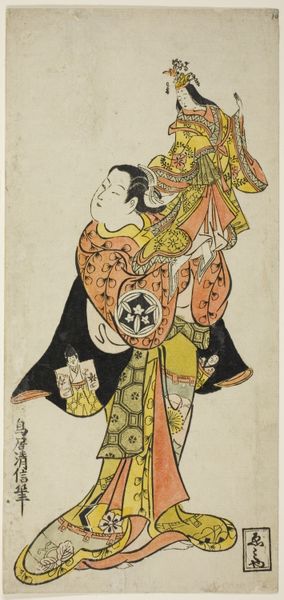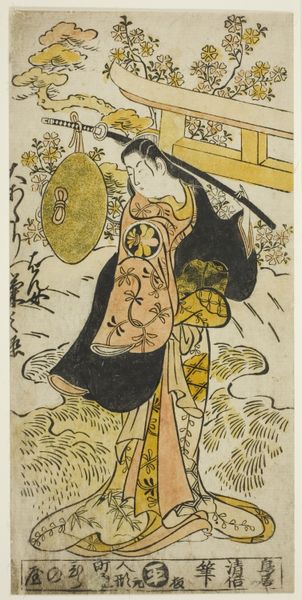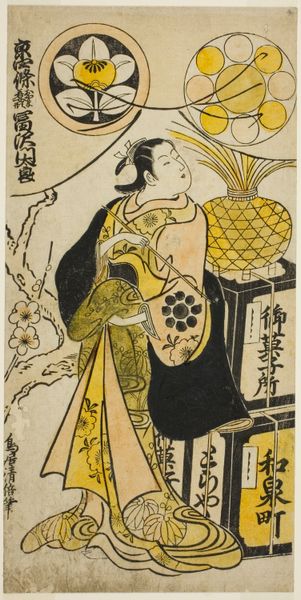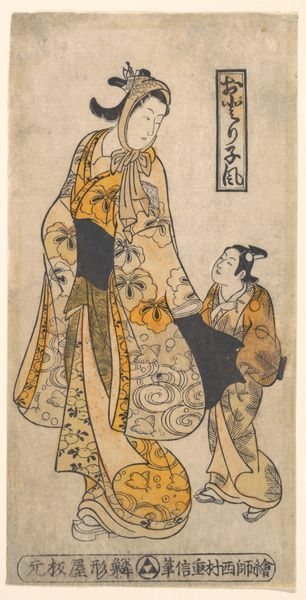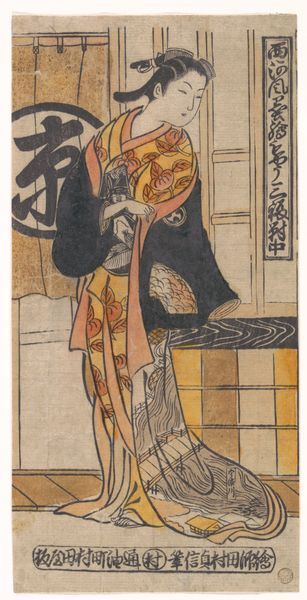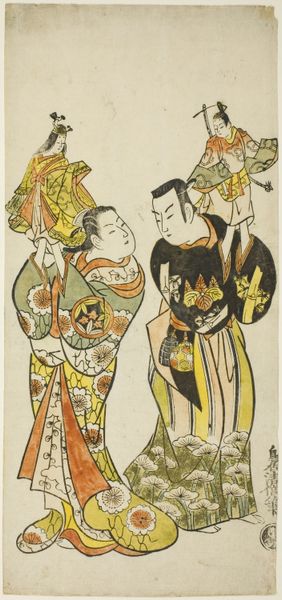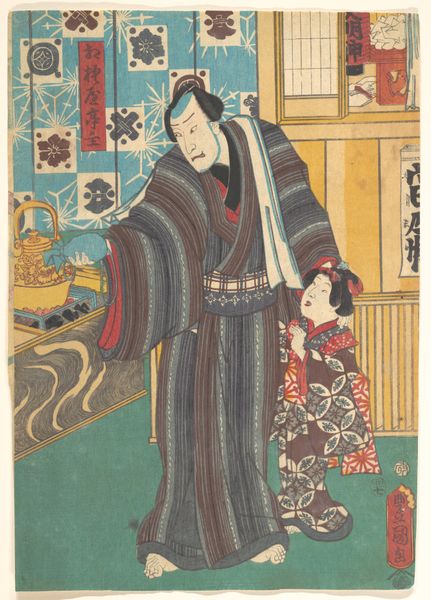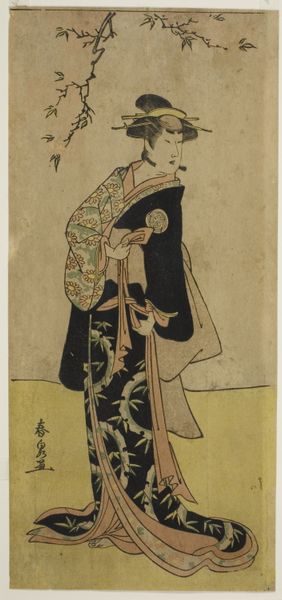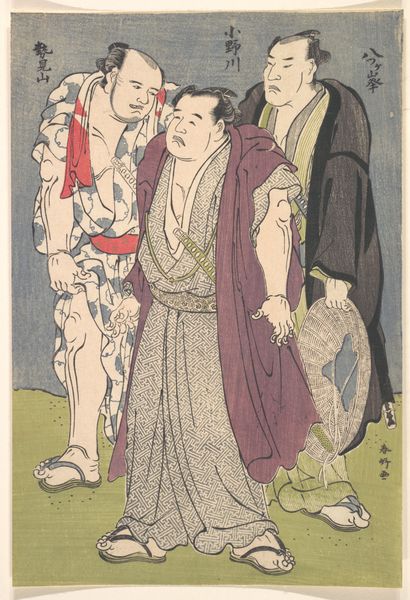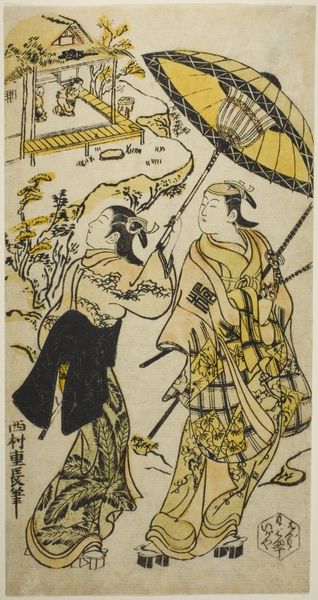
Buddhist Nun Speaking to Two Little Girls who are Following Her 1720 - 1740
0:00
0:00
print, woodblock-print
#
portrait
#
girl
# print
#
asian-art
#
ukiyo-e
#
japan
#
figuration
#
woodblock-print
Dimensions: H. 11 3/4 in. (29.8 cm); W. 5 7/8 in. (14.9 cm)
Copyright: Public Domain
Curator: This woodblock print by Kondo Katsunobu, dating from 1720 to 1740, is entitled "Buddhist Nun Speaking to Two Little Girls who are Following Her." The piece beautifully captures a moment in time. Editor: It has a calming effect; the muted palette and gentle lines contribute to a serene and somewhat intimate atmosphere. The vertical composition emphasizes the nun's stature in comparison to the young girls. Curator: It's interesting to consider the woodblock process itself. Each color required a separate block, painstakingly carved and aligned to create the final image. We must ask, then, about the labor involved, and about the market for these prints. Who were the consumers of these images, and what did these representations of religious women and children mean in early 18th-century Japan? Editor: Absolutely. Think about the power dynamics at play here. Who has access to religious education, and who is guiding the next generation? I see not just a depiction of faith but an exploration of social roles. The nun's dark robes juxtapose against the elaborate patterns of the girls' kimonos, highlighting social standing. The artist is speaking volumes about visibility, mentorship, and gender within this specific cultural framework. Curator: Precisely. Furthermore, let's note the materials themselves – the type of wood used for the blocks, the source and application of the pigments. These are clues to understanding the workshops involved, the local availability of resources, and ultimately, the economy surrounding printmaking at the time. It all speaks to the circulation of goods and ideas within Edo-period society. Editor: Yes, understanding those economic structures, labor practices, and social contexts reveals the deeply layered messages these seemingly simple prints carry. We start to grasp the complex interplay of class, religion, and representation in shaping individual and collective identities. I wonder, also, how a modern audience perceives this image; what remains culturally legible, and what is obscured by the passage of time? Curator: The image offers a quiet yet powerful view into 18th-century Japan. Focusing on both the physical elements and the cultural context lets us unpack rich social histories embedded within the art. Editor: Indeed, I now find myself looking not just at figures, but at representations of faith, knowledge, and identity as commodities within a specific cultural and historical marketplace. Thank you for illuminating these complex issues.
Comments
No comments
Be the first to comment and join the conversation on the ultimate creative platform.
